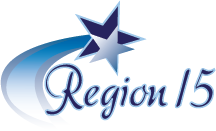-
Texas Transition
"Transition refers to a change in status from behaving primarily as a student to assuming emergent adult roles in the community. These roles include employment, participating in post secondary education, maintaining a home, becoming appropriately involved in the community, and experiencing satisfactory personal and social relationships. The process of enhancing transition involves the participation and coordination of school programs, adult agency services, and natural supports within the community.The foundation for transition should be laid during the elementary and middle school years, guided by the broad concept of career development. Transition planning should begin no later than age 14, and students should be encouraged, to the full extent of their capabilities, to assume a maximum amount of responsibility for such planning.” (Halpern, 1994)For more information, please visit the websites listed below. Please let us know if you need assistance or have questions about transition for your students receiving special education services.DocumentsInformation on statewide services and programs that assist in the transition to life outside of the public school system. This guide includes transition services; employment and supported employment services; social security programs; community and long-term services and support; postsecondary educational programs and services; information sharing with health and human services agencies and providers; guardianship, alternatives to guardianship, including a supported decision-making agreement under Chapter 1357, Estates Code; self-advocacy, person-directed planning, and self-determination; and contact information for all relevant state agencies.This document addresses common questions received by the Texas Education Agency (TEA) relating to CTE and students served by special education. All students should have equitable access to CTE courses, with supports as specified in the IEP. The content of this document provides clarification for the following categories:- ARD committee membership
- Teacher certification and classroom roles
- Special education services, including adaptations to course content and requirements
- Vocational Adjustment Class
Whether you need resources now or are planning for life after graduation, this document identifies
agencies and programs across Texas.Successful transitions are created through supportive early childhood environments. Key components of supportive early childhood environments include: inclusive settings, clear expectations, family involvement, realistic expectations, and futures planning.This guide is intended to provide an outline of the early transition activities, timelines, and recommended practices to facilitate a child’s transition from Part C (Early Childhood Intervention) to Part B (Early Childhood Special Education) of the Individuals with Disabilities Education Act (IDEA). It is important for professionals from both programs to understand the requirements of Part C and Part B of IDEA in order to ensure collaboration, compliance, and effective transitions for children and families. The law requires a smooth and effective transition from one system to the next for children who receive services in Part C and are potentially eligible for Part B services. Both programs must work together in order to meet the IDEA requirement for public schools to develop the individualized education program (IEP) for each child that is eligible by his or her third birthday.The Next Steps checklist can also serve as an informal transition assessment for self-determination skills. It is divided by age and grade ranges, starting with Birth to Age 3 and ending with 18+ (Ages 18-22), highlighting critical developmental milestones.The checklist represents averages and will not fit every child perfectly. If appropriate, use a younger or older age and grade range to better understand the child or adult student’s strengths and transition needs.
The Next Steps checklist focuses on specific skill areas that help predict postsecondary success for children and adult students with disabilities:
- Choice Making & Decision Making,
- Goal Setting & Independence,
- Self-Management & Self-Awareness, and
- Self-Determination & Self-Advocacy.
SPP 13/ 14 WebsitesWebsites for Additional ResourcesContact Information
Valerie Moos, Education Specialist - valerie.moos@esc15.netChristina Vasquez, Administrative Assistant - christina.vasquez@esc15.net


